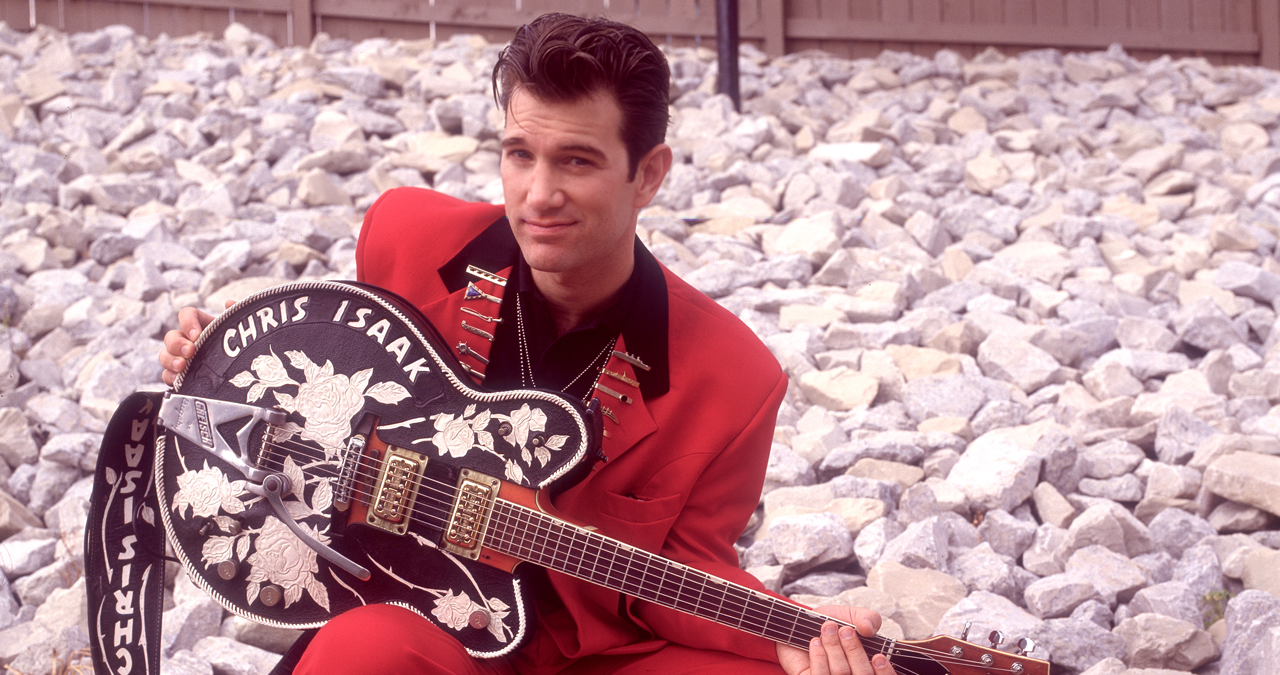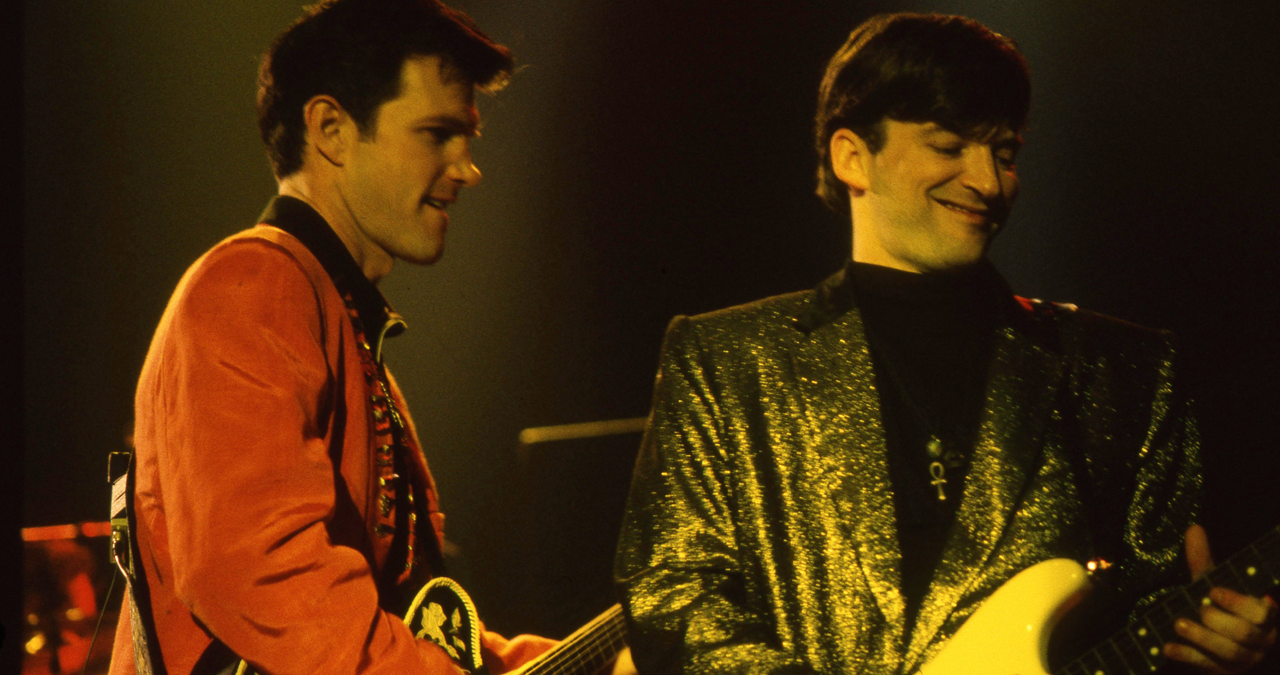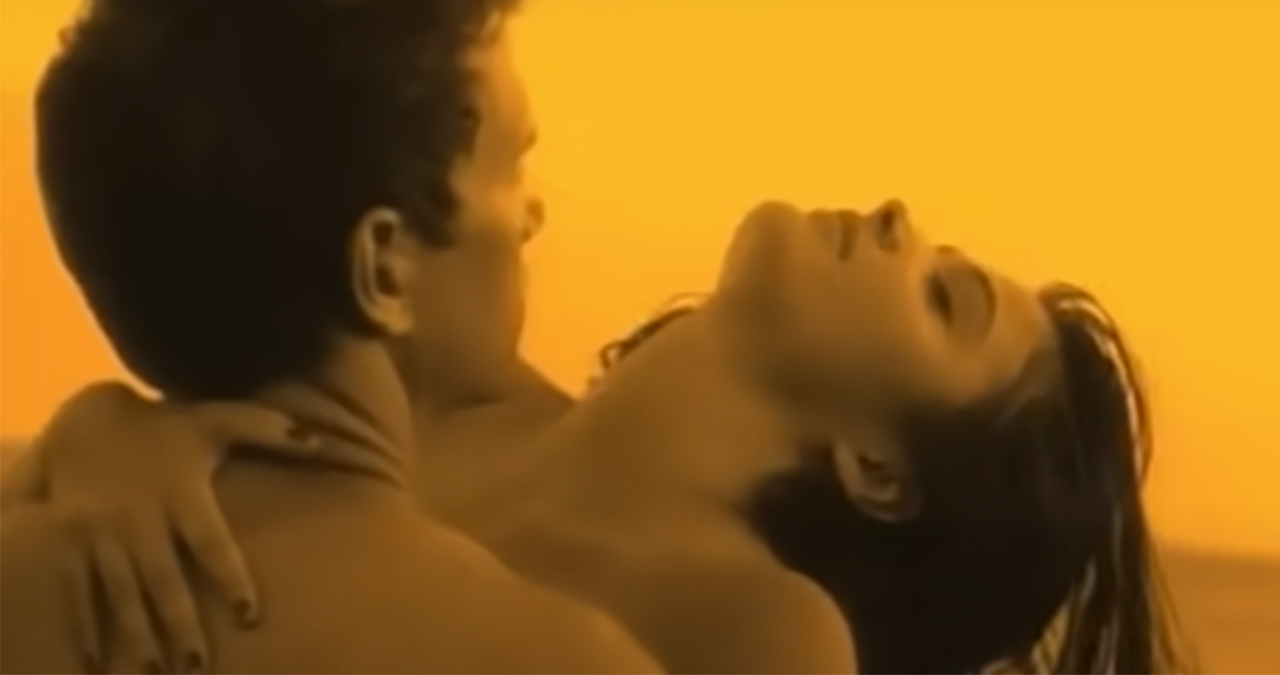“David Lynch said, ‘I’m using this song in a movie. Hey, why don’t we have a video?’ I said, ‘David, because I don’t have any money'”: How Chris Isaak's Wicked Game could have been lost if not for David Lynch
Chris Isaak’s steamy 1989 masterpiece took the intervention of David Lynch before it started turning heads

When it really comes down to it, there’s very few songs that we’d actually cite as legitimately spine-tingling. But, decades from its original release, there’s one song that retains the power to give us the shivers on every spin.
With its balance of intensity and vulnerability, Chris Isaak’s haunting, out-of-time masterpiece Wicked Game is still beguiling new listeners today.
Lyrically depicting a misguided romantic liaison, Isaak elevated the intimacy of the arrangement at the chorus with a stirring high-register falsetto.
Coupled with that, are the song’s reverb-drenched guitar lines, delivered by James Calvin Wilsey (aka, the ‘King of Slow’), working to establish the track’s desolate and expansive atmosphere.
Despite its now-obvious brilliance, Wicked Game’s particular worth wasn’t initially recognised by Isaak or his band, who at the time of its writing were struggling to expand their audience beyond a core group of keen appreciators.
Thankfully, fate - in the unmistakable shape of esoteric filmmaking monolith David Lynch - intervened…
The Song: Chris Isaak - Wicked Game
The Magic Moment: Isaak’s stunning falsetto vocal during the chorus beginning at 01:08 and the affecting guitar playing of James Wilsey throughout the song.
Want all the hottest music and gear news, reviews, deals, features and more, direct to your inbox? Sign up here.
Originally hailing from Stockton, California, Chris Isaak’s chief creative ambition as a songwriter was to draw on the aesthetics of early rock ’n’ roll, surf rock and rockabilly, melded with a nostalgia-inducing, crooning vocal delivery.
Getting traction with 80s' audiences however - then in thrall to the arena-filling mega-pop of Madonna, Prince and Michael Jackson - seemed nigh-on impossible.
“I try to get the 80s' sound,” Isaak told Absolute Sound in 1987. “I think that to go back and say I want this to sound like a 50s' recording…There are some aspects of our sound that are old fashioned, or classic, or whatever you want to call it - the vocal being way on top of the mix - trying to leave a lot of space for the guitar, using echoes that are big and clear.”
While his 1985 debut Silvertone and its eponymous follow-up were chock-full of sparkling cuts, unfortunately, save a thin (yet dedicated) audience, the world really wasn’t listening.
Isaak later maintained that during this era, he’d regularly speak to radio station DJs and nag them for airplay. Despite assurances to Isaak that they were personally big fans of his work, they regretfully informed the forlorn songsmith that their bosses wouldn’t allow his flavour of niche material to be played on air.
This genre-snobbery created something of a vicious cycle of exposure-limitation.
Perhaps there really was a sizeable audience out there, just waiting to lap up Isaak’s brand of ghostly Americana - but how would they find their way in?

Isaak knew that for his third studio album, Heart Shaped World, he and his band (also dubbed Silvertone) needed to work harder than they’d ever worked before.
Teaming up with veteran Lovin’ Spoonful producer Erik Jacobsen, Isaak delivered his strongest set of songs to date. With his core rhythm section of Kenney Dale Johnson (drums) and Rowland Salley (bass) at the band’s heart, it was really the delicately wrought, widescreen guitar sound of Isaak’s long-term right-hand man, James Calvin Wilsey that lifted this fresh tranche of songs into a higher plane.
Formerly a key player in the San Francisco punk scene, Wilsey had joined Isaak earlier in his career. Seeking a different kind of challenge.
Wilsey had traded in the power chords for a reverb-heavy, toppy guitar tone that he had dubbed ‘nitro twang’. It proved to be a sublime complement to Isaak’s increasingly brooding vocals.
Though the third album set was shaping up well, the song that would change the fortunes of the band - and Isaak himself - forever, manifested quickly. Almost as if from the ether…
The concept and shape of the song came to Chris in a mere fifteen minutes. “It’s about 4am in the morning and [a girl] called to say ‘I’m coming over your house’,” Isaak recalled to the Rock & Roll Hall of Fame. “Right after I said ok, I thought ‘I should never have allowed this person to come over my house… I know what’s going to happen.”
Unnerved about the inevitable physical - and emotional - entanglement that was undoubtedly going to ensue, Isaak penned the bulk of the song in the fifteen minutes between putting down the phone and the girl arriving at his house.
“It’s just about what happens when you have a strong attraction to people who aren’t necessarily good for you,” Chris reflected.
Though the core of the song was hastily conceived - getting the arrangement and vibe right took far longer.
Various different versions of the track were cut. Some were at different tempos and struck a range of disparate moods.

But, with these various patchwork performances captured, Jacobsen, Silvertone and the engineering team relocated to a smaller studio (Dave Wellhausen Studios) to begin a process of gradually assembling the mix via a combination of sampled takes (captured via an Akai DD1000), while early MOTU software (then called ‘Mark of the Unicorn’) was harnessed to piece together what would be the final track.
One element that remained utterly central was Isaak’s choice to turn his voice into a Roy Orbison-inspired falsetto on the word ‘I’ during the song’s chorus.
Isaak’s soaring vocal emphasised the frailty of the uncertain protagonist of the lyric perfectly. Its intimacy was captured by a Sanken C-41 microphone
No, I don't wanna fall in love
No, I don't wanna fall in love
With you, with you
The song’s other core ingredient, Wilsey’s guitar, sonically marked-out the landscape on which Isaak stood. Its reverb and delay-soaked tone suggesting a desert-evoking scale.
Wilsey recalled that initially, Isaak was unsure about his guitar idea; “Chris played me that song, and I heard it - it was pretty basic, he only had a few lines - and I thought, ‘This is nice, this is right up my alley, I can do something,’” Wilsley was quoted as saying by Rhythms Magazine. “So I didn’t really worry about it. A couple of days later I thought of a riff for the intro and some other parts and I thought, ‘Good, it’s done. I don’t have to worry about that one any more.’ It was one of the few times where I felt like that was it. Sure of it. I don’t think Chris liked it at first, he thought it sounded sort of out of tune.”
With the riffs settled on, the next step was getting that vast guitar tone just right.
Plugging into a 1964 Fender Deluxe amp miked up with a Shure SM57, Wilsey routed his signal into a TC Electronic 2290 for pre-delay and then on to a Eventide H3000 (set to the Rich Chorus preset).
As detailed on the Steve Hoffman forum, this resulted in his distinctive quarter-note, triplet delay. This was dialled up and down in-studio by engineer Mark Needham.
With this effect daubed atop Wilsey’s riffs, the guitar sounded pained but intensely sexy - almost bleeding-out a mixture of anguish and lust from the edges of its notes.
The song sounded divine. It was the obvious highpoint of Isaak’s strongest record to date.
Obvious to all but Isaak it seemed, who passed it over as the album’s lead single - that honour instead went to the perfectly fine, but inferior, Don’t Make Me Dream About You.
Wicked Game did follow soon after and was released (without a video) on July 14th 1989. Unfortunately it was already trailing a sliding parent album which had been released a month before. Despite critical adulation, Heart Shaped World was quicksand-stuck at the lower reaches of the Billboard Top 200.
And, those same issues with getting airplay meant that Wicked Game was, initially, well out of the earshot of most.
So far, so familiar for Chris.
When played out live however, Isaak was beginning to notice that his little 4am ballad was starting to turn heads.
“Everywhere we played, we noticed when it came to that song, people would pay attention,” Isaak told Steve Pafford.
Despite appeals to his label, (Warner imprint Reprise), to shoot a video, they weren’t interested in footing the bill.
That could have been it for this timeless gem, were it not for the godlike intervention of one David Lynch.
Lynch had been besotted by Isaak’s wistful, nostalgic sound for years - and had previously used his music in his iconic 1986 classic Blue Velvet. It too sharing a similar sense of temporal dislocation.
On the hunt for some new shimmering Isaak material to appear in his upcoming Nicholas Cage and Laura Dern-starring Wild at Heart, Lynch dove into Heart Shaped World.
Immediately recognising Wicked Game as a standout - and a perfect fit for his quirky, mystical romance - Lynch requested that he be able to use it (and other Heart Shaped World track, Blue Spanish Sky) as a recurring motif in the film.
“It’s very soulful, and it creates a mood,” Lynch told MTV in 1990, before explaining why he opted to only use an instrumental version of the song for his film; “It’s very hard to use lyrics in a film. They fight a scene with dialogue.”
But so enraptured by the song was Lynch, that he funded the creation of a music video for the track to feature on the Wild at Heart VHS release, which featured Isaak and his band performing intercut with clips from the movie.
"David Lynch said, ‘I’m using this song in a movie. Hey, why don’t we have a video?’ I said, ‘David, because I don’t have any money'", Isaak told Steve Pafford. "Pretty much on his own, he drove the project to make that video. People forget, but he made the first video for Wicked Game."
Cemented as a prominent piece of Lynch’s odd but beguiling film, Wicked Game began to prick up ears.
Lee Chesnut, the music director of Atlanta radio station WAPW opted to air the song incessantly. Suddenly, thousands of listeners were drawn in by the track's allure - and this long-forgotten single began to creep back up the chart.
Isaak soon realised that, with the right promotion, he could finally have that elusive hit he'd been looking for.
Teaming up with fashion photographer and sometime director Herb Ritts, Isaak enlisted supermodel Helena Christensen to star in a new (and erotically-charged) video, that emphasised the doomed, sex-fuelled romance of its lyric. Christensen’s lack of clothing, and her seeming intimacy with Isaak proved to be electrifying.
“People thought we were really lovers,” Isaak remembered to the Rock & Roll Hall of Fame, “[Helena] was a very beautiful woman. It looks romantic in the video but in real life, we [were] on a beach, and they were throwing buckets of cold seawater on us to keep us wet. There was a little bit of a wind, she was freezing. Just shivering.”

He'd nailed the perfect visual accompaniment, but the ever-uncertain Isaak remained skeptical as to whether the video would be shown. “I just don’t think it’ll be sexy enough for them to play it”, he commented to Ritts, worrying that the frequent shots of himself were ‘boring and bad’.
As we all know, however, Isaak couldn’t have been more wrong.
The song became a phenomenal hit for Isaak and its provocative video garnered constant rotation on MTV. It fast became an instantly recognisable pop cultural touchpoint.
Subsequently, the single raced up the chart and finally, well over a year since its first release, became a top 10 hit in the US and across the globe in March 1991. Quite the comeback.
Still majestic all these years later, and perhaps due to its somewhat arcane undercurrents and timeless feel, Wicked Game retains its seductive energy while other love songs have since lost their lustre.
The song's depiction of a knowingly wrong pursuit of short-term excitement struck a resonant chord with many a guilty listener.
“I think it hit a nerve because I think a lot of us have a strong attraction to people that aren’t necessarily good for us,” Isaak reflected.

I'm Andy, the Music-Making Ed here at MusicRadar. My work explores both the inner-workings of how music is made, and frequently digs into the history and development of popular music.
Previously the editor of Computer Music, my career has included editing MusicTech magazine and website and writing about music-making and listening for titles such as NME, Classic Pop, Audio Media International, Guitar.com and Uncut.
When I'm not writing about music, I'm making it. I release tracks under the name ALP.
You must confirm your public display name before commenting
Please logout and then login again, you will then be prompted to enter your display name.
